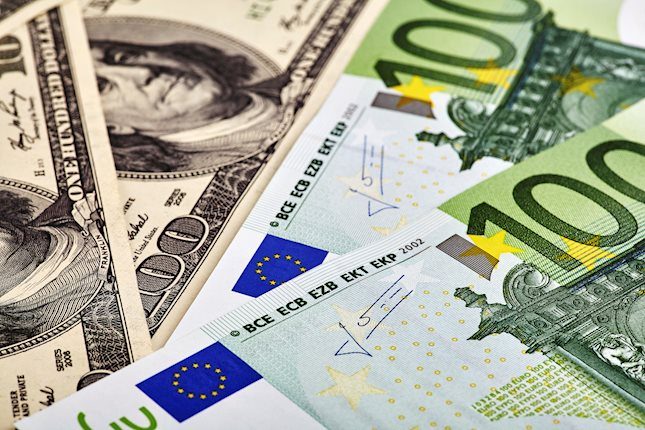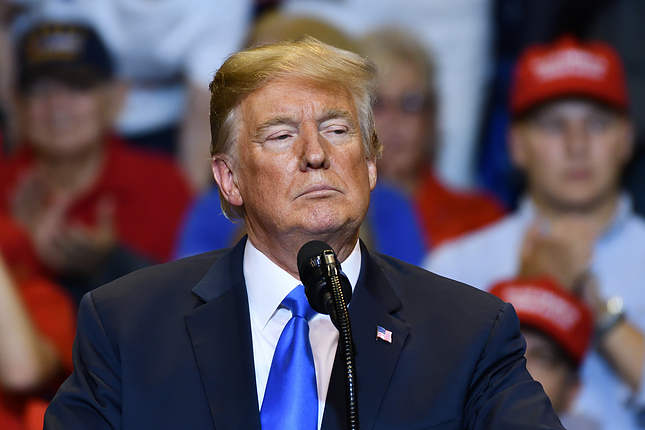In an interview with the Financial Times (FT) on Tuesday, New York Federal Reserve (Fed) President John Williams said "I personally expect that it will be appropriate again to bring interest rates down over time.”
Williams said that he doesn't see the September move "as the rule of how we act in the future."
"Right now, I think monetary policy is well positioned for the outlook, and if you look at the SEP [Summary of Economic Predictions] projections that capture the totality of the views, it's a very good base case with an economy that’s continuing to grow and inflation coming back to 2 percent,” Williams told the FT.
Market reaction
Williams’ remarks follow the dovish commentary from his St. Louis counterpart Alberto Musalem, leaving the US Dollar on the back foot against its major rivals.
At the time of writing, the US Dollar Index (DXY) loses 0.15% on the day to trade at 102.40.
US Dollar FAQs
The US Dollar (USD) is the official currency of the United States of America, and the ‘de facto’ currency of a significant number of other countries where it is found in circulation alongside local notes. It is the most heavily traded currency in the world, accounting for over 88% of all global foreign exchange turnover, or an average of $6.6 trillion in transactions per day, according to data from 2022. Following the second world war, the USD took over from the British Pound as the world’s reserve currency. For most of its history, the US Dollar was backed by Gold, until the Bretton Woods Agreement in 1971 when the Gold Standard went away.
The most important single factor impacting on the value of the US Dollar is monetary policy, which is shaped by the Federal Reserve (Fed). The Fed has two mandates: to achieve price stability (control inflation) and foster full employment. Its primary tool to achieve these two goals is by adjusting interest rates. When prices are rising too quickly and inflation is above the Fed’s 2% target, the Fed will raise rates, which helps the USD value. When inflation falls below 2% or the Unemployment Rate is too high, the Fed may lower interest rates, which weighs on the Greenback.
In extreme situations, the Federal Reserve can also print more Dollars and enact quantitative easing (QE). QE is the process by which the Fed substantially increases the flow of credit in a stuck financial system. It is a non-standard policy measure used when credit has dried up because banks will not lend to each other (out of the fear of counterparty default). It is a last resort when simply lowering interest rates is unlikely to achieve the necessary result. It was the Fed’s weapon of choice to combat the credit crunch that occurred during the Great Financial Crisis in 2008. It involves the Fed printing more Dollars and using them to buy US government bonds predominantly from financial institutions. QE usually leads to a weaker US Dollar.
Quantitative tightening (QT) is the reverse process whereby the Federal Reserve stops buying bonds from financial institutions and does not reinvest the principal from the bonds it holds maturing in new purchases. It is usually positive for the US Dollar.
Information on these pages contains forward-looking statements that involve risks and uncertainties. Markets and instruments profiled on this page are for informational purposes only and should not in any way come across as a recommendation to buy or sell in these assets. You should do your own thorough research before making any investment decisions. FXStreet does not in any way guarantee that this information is free from mistakes, errors, or material misstatements. It also does not guarantee that this information is of a timely nature. Investing in Open Markets involves a great deal of risk, including the loss of all or a portion of your investment, as well as emotional distress. All risks, losses and costs associated with investing, including total loss of principal, are your responsibility. The views and opinions expressed in this article are those of the authors and do not necessarily reflect the official policy or position of FXStreet nor its advertisers. The author will not be held responsible for information that is found at the end of links posted on this page.
If not otherwise explicitly mentioned in the body of the article, at the time of writing, the author has no position in any stock mentioned in this article and no business relationship with any company mentioned. The author has not received compensation for writing this article, other than from FXStreet.
FXStreet and the author do not provide personalized recommendations. The author makes no representations as to the accuracy, completeness, or suitability of this information. FXStreet and the author will not be liable for any errors, omissions or any losses, injuries or damages arising from this information and its display or use. Errors and omissions excepted.
The author and FXStreet are not registered investment advisors and nothing in this article is intended to be investment advice.
Recommended content
Editors’ Picks

EUR/USD extends recovery toward 1.0800 as USD retreats ahead of Fed
EUR/USD continues to push higher toward 1.0800 on Thursday. The pair finds support from a broad US Dollar retreat, as traders unwind their Trump win-inspired USD longs ahead of the Federal Reserve's highly-anticipated policy announcements.

GBP/USD rebounds above 1.2950 after BoE policy announcements
GBP/USD trades in positive territory above 1.2950 on Thursday. The Bank of England (BoE) lowered the policy rate by 25 basis points as expected but the upward revision to inflation projections helped the pair edge higher. Market focus now shifts to the Fed's policy decisions.

Gold rebounds above $2,680, awaits Fed rate decision
Gold recovers following Wednesday's sharp decline and trades above $2,680. The benchmark 10-year US Treasury bond yield edges lower after Trump-inspired upsurge, allowing XAU/USD to hold its ground ahead of the Fed policy decisions.

Federal Reserve expected to deliver 25 bps interest-rate cut, shrugging off Trump victory
The Federal Reserve is widely expected to lower the policy rate after Donald Trump won the US presidential election. Fed Chairman Powell’s remarks could provide important clues about the rate outlook.

Outlook for the markets under Trump 2.0
On November 5, the United States held presidential elections. Republican and former president Donald Trump won the elections surprisingly clearly. The Electoral College, which in fact elects the president, will meet on December 17, while the inauguration is scheduled for January 20, 2025.

Best Forex Brokers with Low Spreads
VERIFIED Low spreads are crucial for reducing trading costs. Explore top Forex brokers offering competitive spreads and high leverage. Compare options for EUR/USD, GBP/USD, USD/JPY, and Gold.